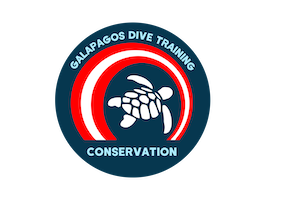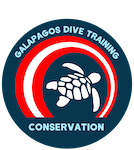VISITING THE GALAPAGOS - Introduction and trip planning
Meet the extraordinary!
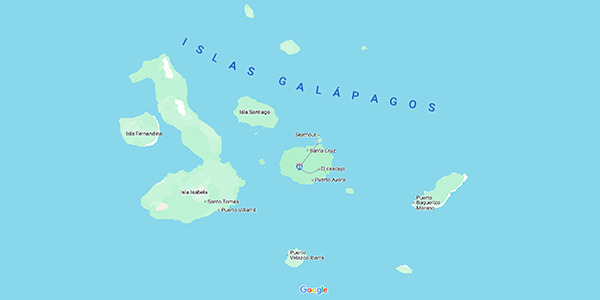
An introductory history
The Galapagos islands were discovered by Tomás de Berlanga, the Bishop of Panama, who inadvertently veered off his route while sailing from Panama to Peru in 1535. For nearly a century, the islands remained largely undocumented until, during the 1560s and 1570s, they were noted as being rich in tortoises, an important food source for mariners, who ate them during lengthy voyages right through to the 19th century. The first detailed charts were created by buccaneers in the late 17th century, these paving the way for scientific exploration that commenced during the 18th century.
In 1832, Ecuador officially claimed the Galapagos Islands, appointing General José de Villamil as the first governor. He oversaw a settlement of ex-rebel soldiers on Floreana Island. A pivotal moment in the island’s history occurred just a few years later when Charles Darwin visited the archipelago in 1835. At that time, the islands were sparsely populated, and still primarily serving as a base for penal colonies - the last one, on Isla Isabela, did not close until 1959.
Conservation efforts began in earnest in 1934, with the designation of certain islands as wildlife sanctuaries. By 1959, an impressive 97% of the archipelago was recognized as a national park. The establishment of the Charles Darwin Research Station on Isla Santa Cruz some five years later marked a significant commitment to scientific study and conservation. The Galapagos National Park Service was founded in 1968, and by 1969, tour boats began to introduce visitors to the islands, drawing tens of thousands annually by the mid-1980s. In 1986, the Ecuadorian Government established the Marine Resource Reserve, and in 2001, the Galapagos Reserve was honored as a World Heritage Site.
To many, the Galapagos Islands evoke imagery of an enchanting realm, where giant tortoises traverse the rugged terrain and sea lions frolic while nipping at marine iguanas diving for lunch. However, the reality is one in which visitors can directly experience the awe-inspiring wildlife and stunning environments these islands offer. Today, Charles Darwin’s earlier characterization of the islands appears almost ironic: “Nothing could be less inviting than the first appearance. A broken field of black basaltic lava, thrown into the most rugged waves, and crossed by great fissures, is everywhere covered by stunted, sunburnt brushwood, which shows little signs of life.” (C. Darwin, 1845)
Geo-location
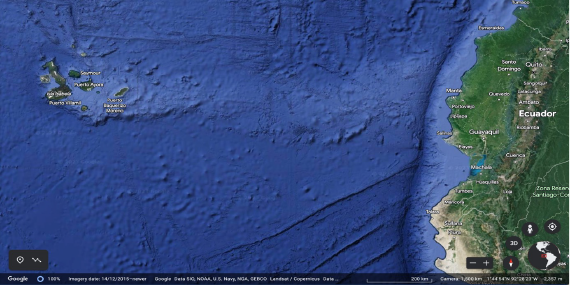
The Galapagos Islands comprise an extraordinary archipelago situated in the Pacific Ocean nearly 1,000 kilometres west of mainland Ecuador. This unique formation includes 13 large islands, 6 smaller islands, and 107 islets and rocks. Geologically, the archipelago lies on the Nazca tectonic plate, with the Galápagos hotspot located on the western side - where the Earth’s crust experiences melting from below due to a mantle plume, resulting in volcanic activity.
The earliest land masses to form emerged millions of years ago but these have since drifted eastward, away from the hotspot and, over time, have become submerged beneath the ocean, due to erosion. In contrast, the two youngest islands, Fernandina and Isabela, continue to form and will take millions of years to move east, erode, and eventually become subsumed beneath the water. The existing islands largely consist of the remnants of once-active volcanoes, with some towering more than 3,000 meters above the Pacific Ocean floor. Notably, Isabela, the largest landmass in the archipelago, demonstrates significant ongoing volcanic activity that shapes its landscape. Geographically, the archipelago is bounded by Darwin Island to the north, San Cristobal Island to the east, Española Island to the south, and Fernandina Island to the west. Within Isabela, Wolf volcano stands as the highest point in the Galapagos, reaching approximately 1,707 meters above sea level and covering an area of about 5,800 square kilometres.
Evolution
The Galapagos archipelago is isolated from the major continental landmasses. This seclusion significantly influences climate, which is shaped primarily by the intricate patterns of ocean currents and trade winds. These forces, combined with persistent volcanic and seismic activity, has fostered the evolution of an extraordinary and often unique array of wildlife.
Among the notable animal species are marine iguanas, the iconic giant tortoises from which the islands derive their name, the world’s northernmost species of penguin, flightless cormorants, and various subspecies of mockingbirds and finches. Perhaps the most notable plants are the towering cacti seen across the islands.
Fortunately for visitors, the ecosystems of the Galapagos remain strikingly well preserved, with an impressive 95% of pre-human biodiversity still intact. Interestingly, the Galapagos stands as the second most pristine environment on the planet, trailing only behind Antarctica. This allows contemporary visitors to witness the very sights that captivated Charles Darwin and inspired his groundbreaking theory of evolution during his visit in 1835
Island habitation
The five inhabited islands in the archipelago are, Isabela, which has the largest landmass, Santa Cruz, with the largest population, Baltra, located just north of Santa Cruz, on which there is an airport, a tourism dock, a fuel containment, and a military base, San Cristobal, the capital of the islands and home to our second largest airport, and Floreana, with the smallest number of residents, just 200 people.
Mainland-Island travel
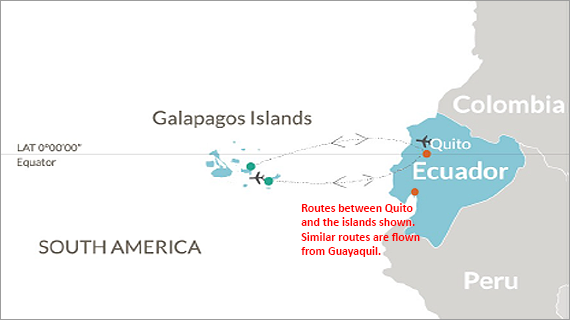
Commercial passenger airlines, Avianca, and Latam, operate flights between the mainland and the Galapagos Islands. These services are accessible from both Quito and Guayaquil airports. While it is occasionally possible to secure a ticket on the day of departure at the airport, it is advisable to make a reservation in advance to ensure availability and avoid any potential disappointment. The price of tickets tends to be similar across airlines, and the fares can be quite steep. This reflects the current state of travel to the Galapagos, where air travel remains the only practical option. There are two airports within the Galapagos that facilitate flights to and from the mainland. The main airport is situated to the north of Santa Cruz Island on Baltra Island. The smaller one is located on San Cristobal Island. Travelers using this latter airport will find themselves just minutes away from the island’s main town. In contrast, those arriving at Baltra must take a bus to the dock and then a ferry across the narrow Itabaca Channel which separates Baltra from the northern part of Santa Cruz Island. After disembarking the ferry, passengers typically continue their journey south across Santa Cruz, most commonly heading to Puerto Ayora, which is approximately a 45 to 60-minute taxi or bus ride away.
Intra-island boating
Passenger ferries operate once or twice daily between the principal populated islands of Santa Cruz, Isabela, San Cristobal, and Floreana. These small, yet powerful motorboats provide essential transport across the archipelago. Typically, the journeys take around two hours each way; however, during the months of July to December, travellers may experience longer trips due to choppier seas. It’s advisable to consider using medication during this period, if you are prone to sea sickness. The morning ferries connecting Santa Cruz, Isabela, and San Cristobal usually depart between 06:00 and 07:00 hours, while afternoon services operate from 14:30 to 15:00 hours. For those traveling to Floreana, there is a daily service that leaves Santa Cruz at 14:30 hours. The usual fare ranges from $25 to $30 per person per trip. Additionally, please note that there will be a small fee for all transfers between dock and ferry/ferry and dock.
Intra-island flying
Small passenger planes service those wishing to fly between Baltra, Isabela and San Cristobal, at an approximate cost of $150-250 per leg.
Planning your trip - The essentials…
Most visitors to Ecuador can secure a visa upon arrival, as long as their passport is valid for at least six months, and they possess a return ticket. Nonetheless, it is advisable to verify the latest entry requirements with your local Ecuadorian Consulate.
Entering the Galapagos Islands is a straightforward process, but keep the following points in mind:
- All flights to the Galapagos depart from mainland Ecuador; there are no direct international flights.
- Due to flight schedules, it is common for visitors to spend a night on the mainland upon arrival, with flights to Baltra or San Cristobal airports typically occurring the next day.
- Tourists are generally allowed a maximum stay of 60 days per year.
Additionally, please note that visitors must complete three essential steps to access the islands:
i) Acquire and pay for a Transit Control Immigration Card (TCC) for each member of your group at either Quito or Guayaquil airport.
The Galapagos Governing Council employs the Transit Control Card System to track the duration of visitors’ stays on the islands. You can complete your TCC on the Ecuadorian Government’s dedicated website before arriving in the country, or you can register in Ecuador just prior to checking in for your flight to the Galapagos from Quito or Guayaquil airport. Regardless of the method you choose, the TCC fee is $20 per person.
ii) Undergo ‘Bio-security Bag Screening’ after you obtain your TCC and before you check in at the airline counter.
You do this by passing all your luggage through dedicated x-ray machines. There is a restricted list of fruits, vegetables, nuts, and grains that you can carry into the Galapagos. Generally, store-purchased sealed goods with labels are okay but fresh, natural, goods are likely to be confiscated. After you have your TCC documentation, have paid the fee for this, and have taken your bags through Bio security, take your return tickets and check in at the counter of your chosen airline.
iii) Upon your arrival in the islands, you will be required to complete a declaration confirming that you are not bringing any items that violate bio-security regulations and to pay the entrance fee for the National Park.
While there is an ATM machine at the airport, this may not always be operational and bringing cash for this purchase is advised.
The entrance fee for the National Park is determined by the visitor’s status, as outlined below:
Foreign tourists (non-residents of Ecuador) aged 12 and older: $200
Foreign tourists (non-residents of Ecuador) under 12 years old: $100
Lower fees apply to national and foreign tourists residing in Ecuador, and those associated with CAN, (Bolivia, Colombia, and Peru) and MERCOSUR (Argentina, Brazil, Paraguay, Uruguay, and Venezuela).
Important - Make sure to keep the documentation you receive upon entry, as you will need to present it when departing from your selected airport in Galapagos.
Currency
The official currency used in Ecuador and the Galapagos Islands is the US dollar (USD). On Santa Cruz and San Cristobal Islands, there are ATMs available for cash withdrawals, allowing amounts between $300 and $500 per day per card. However, Isabela Island has fewer ATM options.
While many restaurants, souvenir shops, and agencies accept credit cards, most impose an additional fee ranging from 8% to 22%! Therefore, cash remains the preferred method of payment on the islands!
Sales Tax
A sales tax of 12% is applied to nearly all food and goods purchased in the islands, as well as on various other items. In certain cases, this tax can be refunded upon departure if you keep the receipts for your purchases.
Time Zones
Quito and Guayaquil operate on Standard Time, which is -5 hours GMT (equivalent to Eastern Standard Time in the USA). The Galapagos Islands are on -6 hours GMT (one hour behind EST). Make sure to adjust your watch or phone to the local time upon your arrival, as many devices do not automatically update.
It’s common to hear frustrated customers contacting local service providers, mistakenly thinking their pickups are an hour earlier than scheduled!
Tips
Gratuities are not usually included in the prices of tour packages or dive services. Below are our personal insights into the tipping practices used on the islands.
Most crew members work diligently for visitors, often for extended periods of 2-3 weeks, relying on modest salaries while striving to provide excellent service.
There is no established standard for tipping in Ecuador, and the sums offered can vary widely. Some visitors may leave only the coins from their change, while others might tip between 15% and 20% of the total cost.
If you are satisfied with the service you receive, we recommend considering a tip of around 5% to 10%. Your kindness will be genuinely appreciated and will significantly impact those who receive it.
Your Packing List?
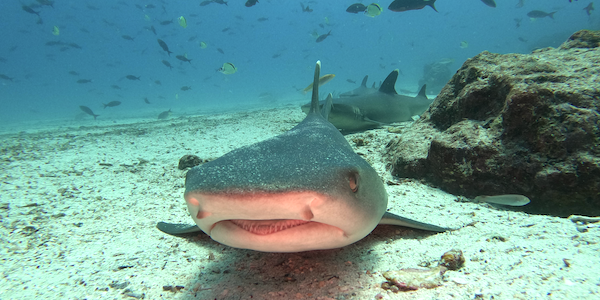
Regardless of whether you arrive in the islands during the hot or cold season, the essential items you require are likely to be as follows:
Must haves -
Passport
Travel and accommodation documents
Cash and cards
Insurance documentation
Small backpack for water, towel, food, camera, etc.
Re-fillable, preferably recycled, water bottle
Dry Bag – if you plan on using day boats for outings
Camera and significant extra storage i.e., additional SD cards (preferably an underwater camera). Options here are limited and expensive
Sunhat with strap, as you’re going to be on the equator! Although, some prefer a sun umbrella.
Sunglasses (polarized if spending a lot of time on the water)
Windbreaker/Light weight rain jacket, it can get cool in the mornings and out on a boat. Misty rain in the cold season and morning downpours in the hot season are common
Insect Repellent and Sunscreen, minimum 50 factor if you burn easily
Some lightweight, light coloured, breathable clothes, inc. shorts, t-shirts and longer garments to counter the mosquitos in the evenings!
Walking shoes/boots and comfortable sandals - some people bring the water-resistant type which are great for all tours
Essential medicines and toiletry kit
If you are diving/snorkelling -
Bathing suit/s
Mask & snorkel
Perhaps an exposure suit, Lycra rash vest, neoprene skin, or similar - it’s easy to burn in/on the water
Perhaps also your full dive kit - but note all this gear can be rented once you’re here!
See also in this section:
